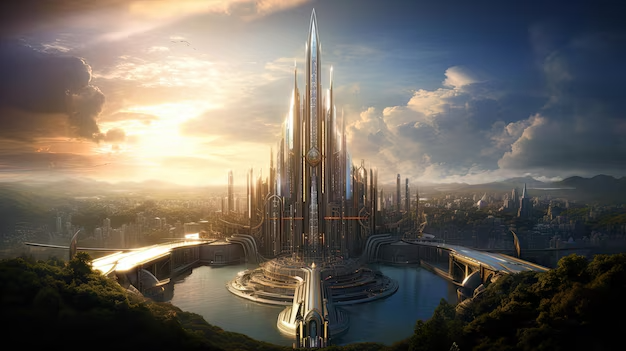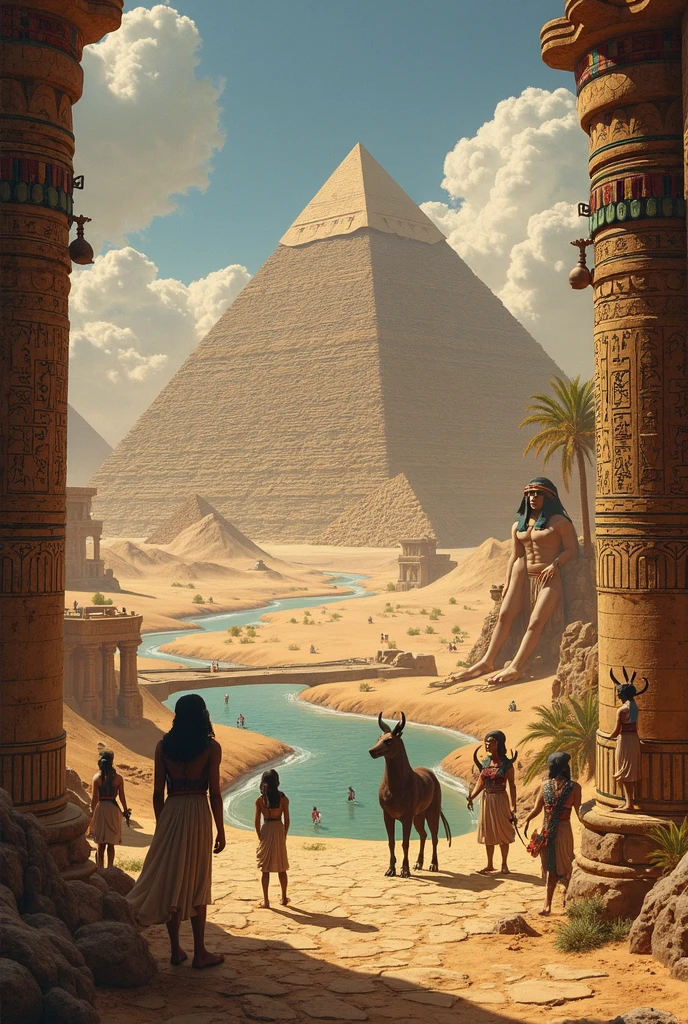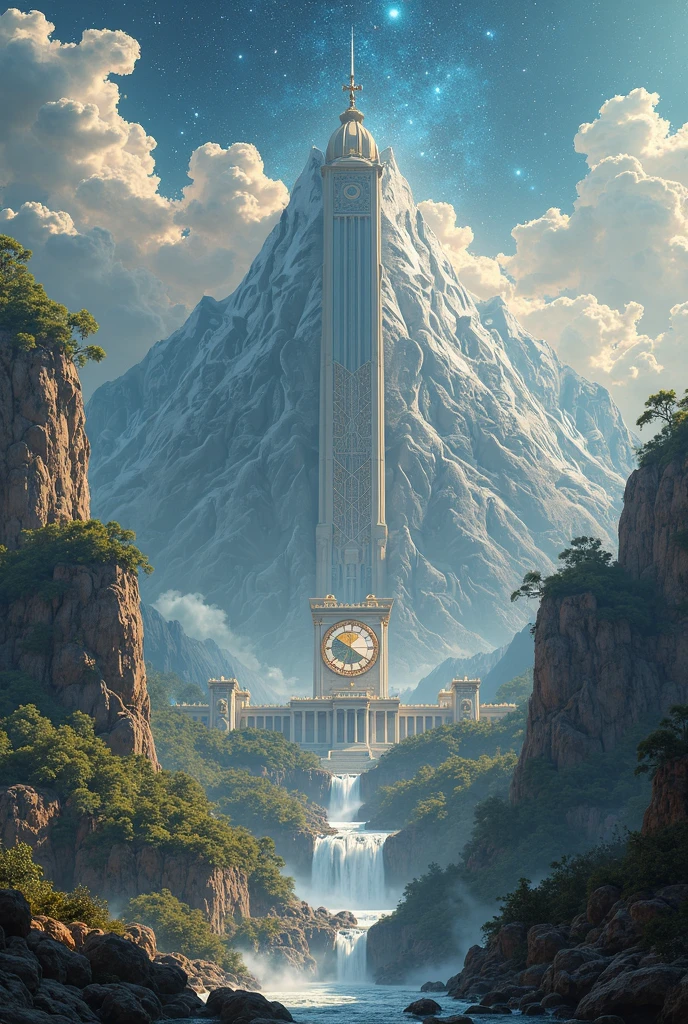Buddhist Mythology: Exploring the Divine and Cosmic Order
Buddhist mythology is a rich tapestry of divine beings, cosmic realms, and profound teachings that shape the spiritual journey of practitioners. Central to this mythology is the concept of Deva, celestial beings who inhabit higher realms but are still bound by Karma and Samsara. This article delves into the intricate cosmology of Buddhism, exploring key figures like Bodhisattva and realms such as Naraka.
The Role of Devas in Buddhist Cosmology
In Buddhist tradition, Deva refers to divine beings who reside in heavenly realms. Unlike gods in other religions, Devas are not eternal; they are subject to rebirth based on their accumulated Karma. These beings enjoy immense pleasure and longevity but must eventually face death and reincarnation.
Types of Devas
Buddhist texts classify Devas into several categories based on their realms:
- Kāmāvacara Devas: Beings in the sensuous realm, including the Six Heavens of Desire.
- Rūpāvacara Devas: Beings in the form realm, associated with meditative states.
- Arūpāvacara Devas: Formless beings existing in the highest meditative planes.
| Deva Realm | Characteristics |
|---|---|
| Trāyastriṃśa | Heaven of the Thirty-Three, ruled by Śakra. |
| Tushita | Realm where Bodhisattvas await rebirth. |
| Nirmanarati | Devas who delight in their own creations. |
Karma and Samsara: The Cycle of Rebirth
The concepts of Karma and Samsara are foundational in Buddhist mythology. Karma refers to the law of cause and effect, where actions determine future rebirths. Samsara is the endless cycle of birth, death, and rebirth, from which beings seek liberation.
How Karma Influences Rebirth
- Positive actions lead to rebirth in higher realms, such as the Deva realms.
- Negative actions result in lower rebirths, including Naraka (hell realms).
- Neutral karma may lead to human or animal rebirths.
For further reading on Buddhist cosmology, visit BuddhaNet.
The Dark Realms: Naraka and Its Divisions
In contrast to the blissful Deva realms, Naraka represents the Buddhist hells, where beings suffer due to past misdeeds. These realms are temporary but intensely painful, serving as karmic retribution.
| Naraka Type | Description |
|---|---|
| Hot Hells | Realms of extreme heat and fire. |
| Cold Hells | Realms of freezing torment. |
| Minor Hells | Lesser realms with specific punishments. |
Bodhisattvas: Compassionate Guides on the Path
A Bodhisattva is an enlightened being who postpones Nirvana to help others attain liberation. These figures are central to Mahayana Buddhism and embody compassion and wisdom.
Famous Bodhisattvas in Buddhist Mythology
- Avalokiteshvara: The Bodhisattva of Compassion.
- Manjushri: The Bodhisattva of Wisdom.
- Kshitigarbha: Protector of beings in hell realms.
Learn more about Bodhisattvas at Lion’s Roar.
Buddhist Cosmology: A Multilayered Universe
Buddhist Cosmology describes a vast, structured universe with multiple realms, including those of Deva, humans, animals, and Naraka. This cosmology reflects the interplay of Karma and spiritual progress.
The Three Realms (Triloka)
- Kāma-loka: The realm of desire, including humans and lower Devas.
- Rūpa-loka: The realm of form, inhabited by meditative Devas.
- Arūpa-loka: The formless realm, accessible only through advanced meditation.
For a deeper dive into Buddhist cosmology, check Access to Insight.
Explore more fascinating topics on our website and stay updated by following us on Facebook.
The Jātaka Tales: Past Lives of the Buddha
One of the most captivating aspects of Buddhist mythology is the collection of Jātaka tales, which recount the previous lives of Siddhartha Gautama before his enlightenment. These stories illustrate moral virtues such as compassion, patience, and self-sacrifice, often featuring the Buddha in animal or human forms.
Notable Jātaka Stories
- The Monkey King: A selfless ruler who saves his tribe by forming a bridge with his body.
- Vessantara: A prince who gives away everything, including his family, to test his detachment.
- The Hungry Tigress: A Bodhisattva offers his body to feed a starving tigress and her cubs.
| Jātaka Tale | Moral Lesson |
|---|---|
| The Hare’s Sacrifice | Selflessness and truthfulness |
| The Golden Deer | Compassion transcends fear |
| The Banyan Deer | Leadership and mercy |
Mythical Creatures in Buddhist Lore
Buddhist mythology is populated with extraordinary beings beyond Devas and Bodhisattvas. These creatures often symbolize spiritual truths or serve as protectors of the Dharma.
Key Mythical Beings
- Garuda: A giant bird-like creature that battles serpents, representing the triumph of wisdom over ignorance.
- Nāga: Serpentine beings associated with water and hidden knowledge, often depicted as guardians of sacred texts.
- Kinnara: Half-human, half-bird musicians symbolizing divine harmony and devotion.
The Wheel of Life: Bhavachakra
The Bhavachakra, or Wheel of Life, is a visual representation of Samsara in Buddhist art. It depicts the cyclical nature of existence, governed by Karma and the Twelve Links of Dependent Origination.
Elements of the Bhavachakra
- The Three Poisons: Ignorance, attachment, and aversion at the wheel’s center.
- The Six Realms: God, demi-god, human, animal, hungry ghost, and hell realms.
- Yama: The deity holding the wheel, representing impermanence.
| Realm in Bhavachakra | Karmic Cause |
|---|---|
| Deva (God) | Pride and excessive merit |
| Preta (Hungry Ghost) | Greed and selfishness |
| Naraka (Hell) | Hatred and cruelty |
The Four Heavenly Kings
In Buddhist cosmology, the Cāturmahārājika (Four Heavenly Kings) are divine guardians who protect the world from evil. Each king governs a cardinal direction and commands supernatural armies.
Roles of the Four Kings
- Dhṛtarāṣṭra (East): Protector of musicians and ruler of the Gandharvas.
- Virūḍhaka (South): Defender of the Dharma, associated with growth.
- Virūpākṣa (West): Watcher over humans, often depicted with a serpent.
- Vaiśravaṇa (North): God of wealth and guardian of sacred sites.
Maitreya: The Future Buddha
While Shakyamuni Buddha is the historical teacher, Buddhist mythology speaks of Maitreya, the Buddha of the future. Believed to reside in Tushita Heaven, Maitreya will descend to Earth when the Dharma is forgotten, renewing enlightenment.
Signs of Maitreya’s Coming
- The disappearance of Buddhist teachings.
- A decline in human morality.
- The rediscovery of the Dharma by a new society.
The Asura Realm: Titans of Buddhist Mythology
Often translated as “demons” or “titans,” the Asuras are powerful but jealous beings trapped in endless conflict. Unlike the Devas, they lack wisdom despite their strength, symbolizing the dangers of ego and ambition.
| Asura Type | Characteristics |
|---|---|
| Krodhāsura | Beings consumed by wrath |
| Mānāsura | Driven by pride and envy |
| Dānāsura | Greedy for power and wealth |
The Pure Lands: Buddha Fields of Bliss
In Mahayana Buddhism, Pure Lands are paradisiacal realms created by Buddhas for devotees to attain enlightenment. The most famous is Sukhavati, the Western Paradise of Amitabha Buddha.
Features of Pure Lands
- Freedom from suffering and distractions.
- Direct access to the Buddha’s teachings.
- Rebirth through faith and devotion.
For more on Pure Land Buddhism, visit Pure Land Buddhism.
The Legend of Padmasambhava
Known as the “Second Buddha,” Padmasambhava is a central figure in Tibetan Buddhism. Myth describes his miraculous birth from a lotus and his subjugation of Tibetan demons to establish Buddhism in the Himalayas.
Eight Manifestations of Padmasambhava
- Guru Tötreng Tsal: The Lotus-Born master.
- Guru Dorje Drolö: The wrathful demon-tamer.
- Guru Nyima Özer: The sunray yogi.
Explore more fascinating topics on our website and stay updated by following us on Facebook.
The Kalachakra: Wheel of Time in Buddhist Mythology
The Kalachakra (“Wheel of Time”) is a profound concept in Vajrayana Buddhism, representing the cyclical nature of time and the universe. This esoteric teaching encompasses cosmology, astrology, and advanced meditation practices aimed at achieving enlightenment within a single lifetime.
Key Aspects of Kalachakra
- Outer Kalachakra: The physical universe, planets, and celestial bodies.
- Inner Kalachakra: The human body, energy channels, and subtle winds.
- Alternative Kalachakra: The path to enlightenment through tantric practices.
| Kalachakra Component | Symbolism |
|---|---|
| Mandala | Cosmic diagram representing the perfected universe |
| 722 Deities | Embodiments of enlightened qualities |
| Time Cycles | 12-year animal signs and 60-year elemental cycles |
The Hungry Ghosts: Preta Realm
Between the human and hell realms exists the Preta (hungry ghost) realm, inhabited by beings tormented by insatiable hunger and thirst. These unfortunate creatures symbolize the consequences of greed, attachment, and unethical conduct in Buddhist teachings.
Characteristics of Pretas
- Distended bellies and needle-thin necks preventing nourishment.
- Perception of clean water as pus or blood.
- Association with unresolved attachments from past lives.
The Medicine Buddha: Bhaiṣajyaguru
Bhaiṣajyaguru, the Medicine Buddha, is a celestial physician who heals physical and spiritual ailments. His deep blue color represents the infinite sky of enlightenment, while his jar of healing nectar symbolizes the Dharma’s transformative power.
Twelve Great Vows of the Medicine Buddha
- To illuminate countless realms with his radiance.
- To awaken beings through his light.
- To provide for all material and spiritual needs.
The Buddhist End Times: Prophecies of Decline
Buddhist eschatology describes a gradual decline of the Dharma through five stages of deterioration, culminating in the arrival of Maitreya. This cyclical view emphasizes impermanence and the need for diligent practice.
| Stage of Decline | Characteristics |
|---|---|
| 1. Sutra Decline | Loss of scriptural understanding |
| 3. Realization Decline | Fewer attain enlightenment |
| 5. Relic Decline | Buddha’s relics lose power |
The Eight Auspicious Symbols
Central to Buddhist iconography are the Ashtamangala, eight sacred symbols representing offerings to the Buddha and aspects of the enlightened mind:
- Parasol: Protection from harmful forces.
- Golden Fishes: Freedom from samsara.
- Conch Shell: The sound of Dharma.
- Lotus: Purity and enlightenment.
The Thirty-Two Marks of a Great Man
Ancient texts describe thirty-two physical characteristics of a Buddha, including:
- Ushnisha (cranial protuberance symbolizing wisdom).
- Dharma Chakra markings on palms and soles.
- Deep blue eyes like a lotus petal.
For more on Buddhist symbolism, visit Himalayan Art Resources.
The Six Realms of Existence
Buddhist cosmology organizes beings into six realms of rebirth, each representing different karmic conditions and mental states:
| Realm | Dominant Emotion |
|---|---|
| Deva (Gods) | Pride |
| Asura (Demigods) | Jealousy |
| Preta (Hungry Ghosts) | Greed |
The Five Dhyani Buddhas
In Vajrayana Buddhism, the Five Wisdom Buddhas represent transformed aspects of the human psyche:
- Vairocana (Center): White, symbolizing reality’s true nature.
- Akshobhya (East): Blue, representing mirror-like wisdom.
- Ratnasambhava (South): Yellow, embodying equanimity.
Explore more fascinating topics on our website and stay updated by following us on Facebook.
The Legend of Angulimala: Transformation Through Compassion
One of Buddhism’s most powerful conversion stories involves Angulimala, a notorious murderer who wore a necklace of fingers from his victims. When he attempted to kill the Buddha, he found he couldn’t catch him despite running at full speed. This miraculous event led to his spiritual awakening and eventual arhatship.
Key Lessons from Angulimala’s Story
- The boundless power of metta (loving-kindness) to transform even the most hardened criminals
- The concept that no being is beyond redemption in Buddhist thought
- The demonstration of karmic consequences when Angulimala later suffered from his past actions despite his enlightenment
| Stage | Transformation |
|---|---|
| Early Life | Promising student corrupted by false teachings |
| As Murderer | Collected 999 fingers before encountering Buddha |
| After Conversion | Became peaceful monk and attained enlightenment |
The Buddhist View of Creation Myths
Unlike many religions, Buddhism doesn’t emphasize a single creation story. Instead, it presents a cyclical view of universe formation and dissolution through kalpas (cosmic cycles). The Abhidharma texts describe how worlds form naturally through the collective karma of beings.
Stages of World Formation
- Dissolution Phase: Existing worlds break down over long periods
- Void Period: Nothing exists but potential for new formation
- Reformation: Worlds gradually re-emerge based on beings’ karma
The Ten Spiritual Realms in Mahayana Buddhism
Beyond the six realms of rebirth, Mahayana texts describe ten spiritual states that beings progress through on the path to enlightenment:
| Realm | Characteristics |
|---|---|
| 1. Hell Beings | Complete suffering and anger |
| 4. Humans | Balance of pleasure and pain allowing spiritual growth |
| 10. Buddhas | Perfect enlightenment and compassion |
The Legend of Milarepa: From Black Magic to Enlightenment
The story of Milarepa, Tibet’s great yogi-poet, demonstrates Buddhism’s transformative power. After using black magic for revenge in his youth, he underwent extreme ascetic practices under Marpa the Translator to purify his karma, eventually attaining enlightenment in one lifetime.
Key Aspects of Milarepa’s Journey
- Built and dismantled stone towers multiple times as part of his purification
- Lived in mountain caves wearing only a cotton cloth (repa)
- Expressed profound teachings through spontaneous songs
For more on Tibetan Buddhist masters, visit Tibetan Buddhist Encyclopedia.
The Concept of Adi-Buddha in Vajrayana
In some Vajrayana traditions, the Adi-Buddha (Primordial Buddha) represents the ultimate, unmanifested aspect of Buddhahood from which all other Buddhas emanate. This concept bridges mythology with profound philosophy about the nature of reality.
Manifestations of Adi-Buddha
- Samantabhadra (Nyingma school): Blue, unadorned, in union with consort
- Vajradhara (Kagyu school): Dark blue, holding vajra and bell
- Vairocana (Shingon school): White, representing the cosmic Buddha
The Buddhist Flood Myth: Manu and the Fish
Buddhist texts contain a flood narrative similar to other ancient traditions. In this version, Manu (a bodhisattva in previous life) is warned by a giant fish (future Buddha) about an impending deluge and builds a boat to preserve knowledge and beings.
| Element | Symbolic Meaning |
|---|---|
| The Fish | Compassion that saves beings from ignorance |
| The Flood | Destruction of spiritual ignorance |
| The Boat | Dharma as vehicle for salvation |
The Guardians of the Directions
Buddhist temples often feature four guardian kings at their gates, protecting the sacred space from negative influences. These powerful figures originated in Indian mythology but were adapted into Buddhist cosmology.
Their Protective Roles
- Dhritarashtra (East): Plays lute, protects from arrogance
- Virudhaka (South): Wields sword, cuts through ignorance
- Virupaksha (West): Holds stupa or serpent, guards against greed
- Vaishravana (North): Carries umbrella and mongoose, prevents pride
Explore more fascinating topics on our website and stay updated by following us on Facebook.


